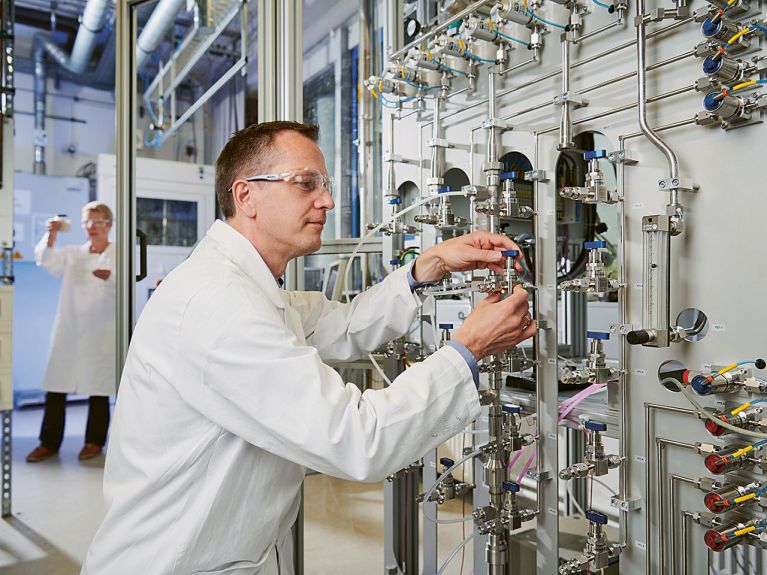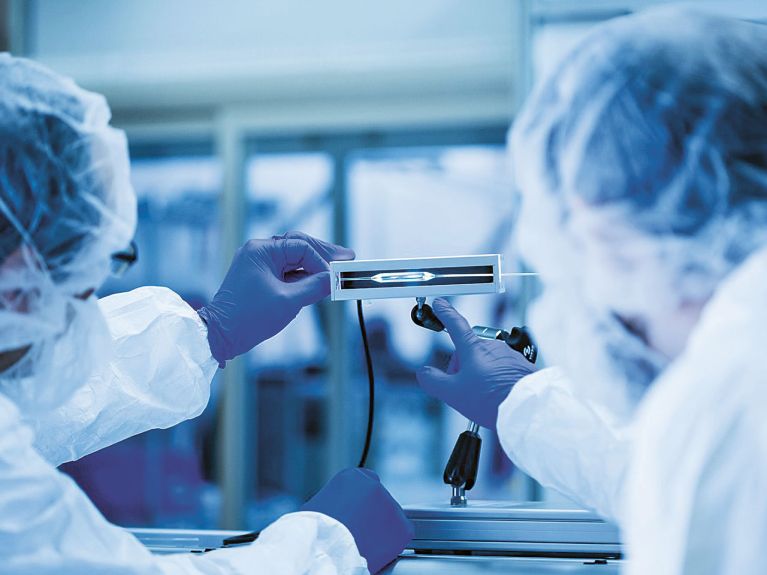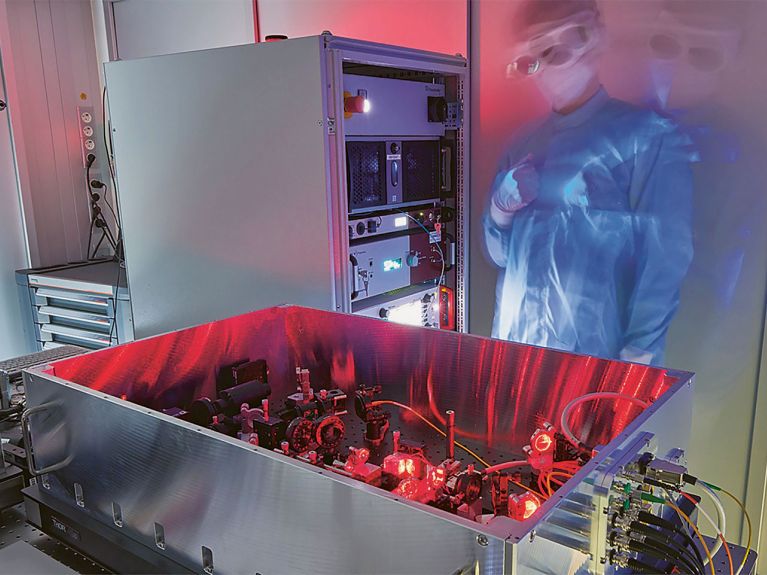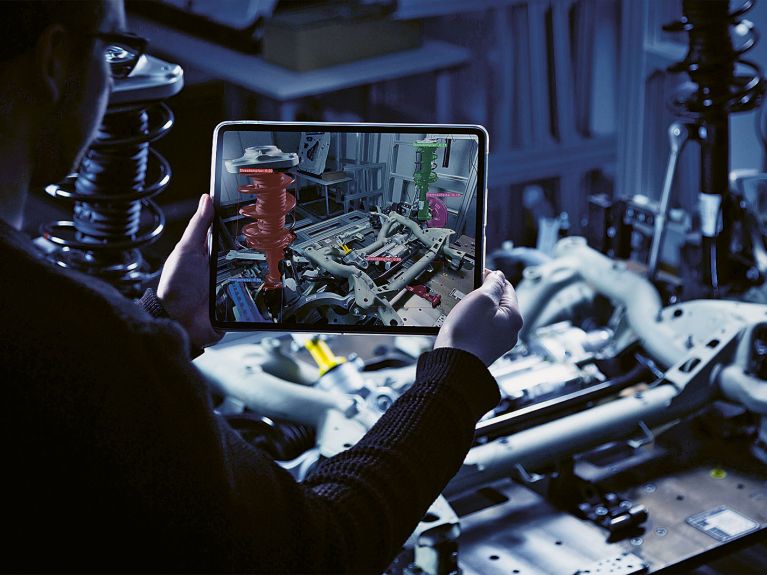Innovative and globally networked
Whether airbag or MP3 format, quantum computing or green hydrogen, Fraunhofer-Gesellschaft has been world famous for 75 Years now when it comes to research and innovation in key technologies.

The scale of the Fraunhofer-Gesellschaft (FhG) only becomes really clear when you take a look at a map. Basically Fraunhofer is everywhere – in Germany it has facilities from Itzehoe near the North Sea coast to the very south of the country in Holzkirchen, Upper Bavaria, where you can see the Alps. Currently there are 76 Fraunhofer institutes and research units in the Federal Republic alone. They are joined by centres on almost all continents: in the USA and Brazil as well as in South Africa, Israel, China and India. The Fraunhofer-Gesellschaft is globally networked and the largest organisation for applied research in Europe. It focuses on building physics, data processing, photovoltaics, biomedicine, mechatronics and polymer research; in fact, there are very few scientific or technological subjects in which the organisation is not active.
World-famous inventions: Airbag, MP3 format, white LED
Many inventions from its institutes are known worldwide: the airbag, for example, or the famous MP3 format that allows you to compress music into small data files. The latter came from the Fraunhofer Institute for Integrated Circuits IIS in Erlangen. In the 1980s researchers there used the well-known song “Tom’s Diner” by Suzanne Vega during development because of its clear rhythm and simplicity. It became the first song ever to be compressed. The white LED is also a world famous invention from the Fraunhofer world. Lamps used to have to mix light from blue, green and red LEDs to produce white light. That made LED systems complicated and expensive. Then, in 1995, researchers at the Fraunhofer Institute for Applied Solid State Physics IAF in Freiburg first succeeded in making a single semiconductor chip emit pure white light. That was the beginning of the LED success story. Today they illuminate millions of offices and homes. Important fields that the FhG is currently working on include, among others, bioeconomy, intelligent medicine, quantum technologies, artificial intelligence and climate technologies. The goal is to achieve energy sovereignty with neighbours in the European Union.
Fraunhofer researches the future topic of hydrogen
That is why hydrogen is a big topic at present. According to Professor Mario Ragwitz, the Speaker of the Fraunhofer Hydrogen Network, 35 institutes are working in this area. “The amazing thing is that we cover the entire value chain from the production of hydrogen to its transportation to consumers,” says Ragwitz. Among other things, the FhG has electrolysis laboratories that are optimising the production of hydrogen. Then there are laboratories working on the further development of fuel cells that convert hydrogen into electrical current. There are also teams researching ways of automating the production of fuel cells, because they are still mainly manufactured by hand, which would be too expensive and too slow for the future mass use of hydrogen. In its search for solutions, the Fraunhofer Institute for Machine Tools and Forming Technology IWU has created an extraordinary research apparatus: a car called the Silver Bumblebee. It is based on 1940s designs for a racing car that was never built. The researchers have now resurrected the car and fitted it with a fuel-cell drive unit that they can use to test new concepts and components.
Where can hydrogen most help the energy transition? It is very practical questions like these that the Fraunhofer researchers always have in mind. Mario Ragwitz believes it makes sense to use hydrogen for applications where there are otherwise practically no green alternatives and where carbon-dioxide emissions can be massively reduced. That applies above all to the chemical and steel sectors, shipbuilding as well as air traffic and heavy-duty transport. In the steel industry, for example, huge quantities of coal are used today to smelt pig iron. The FhG is developing a process that uses hydrogen as fuel in cooperation with the steel producer Salzgitter AG and other partners in the SALCOS project.
Mario Ragwitz sounds a fundamental note of caution about the use of hydrogen: “A hydrogen economy will only function, however, when we are able to transport the gas.” And with reference to the Fraunhofer-Gesellschaft he adds: “We have the necessary competence for that – both with regard to infrastructure planning and materials science knowledge.”
How much money does Fraunhofer invest in research?
During the last ten years the FhG has always been one of the ten to 20 largest applicants for patents at the German Patent and Trade Mark Office. Over the years many patents have been transformed into business ideas. Numerous firms have been spun off, and the FhG held shares in more than 80 enterprises. The annual research expenditure of the Fraunhofer-Gesellschaft amounts to roughly 2.9 billion euros – most of it accounted for by 2.5 billion euros for the core area of contract research.
Collaboration on the Airbus super helicopter racer
Close contacts with industry are not only enormously important for funding; it is also crucial that researchers have detailed knowledge of their industrial partners’ needs so that they can find appropriate solutions. Working in partnership with Airbus, for example, the Fraunhofer Institute for Casting, Composite and Processing Technology IGCV in Augsburg is developing RACER, a high-speed helicopter that will be able to achieve air speeds of up to 400 kilometres per hour and still be highly fuel-efficient. In comparison, conventional helicopters only manage speeds of 230 to 260 kilometres per hour. The institute is manufacturing components of the RACER out of lightweight carbon fibre-reinforced plastic. What is exceptional about the production process is the fact that the layers of carbon fibres are not placed one on top of another by hand, but by a robot. That speeds up production.
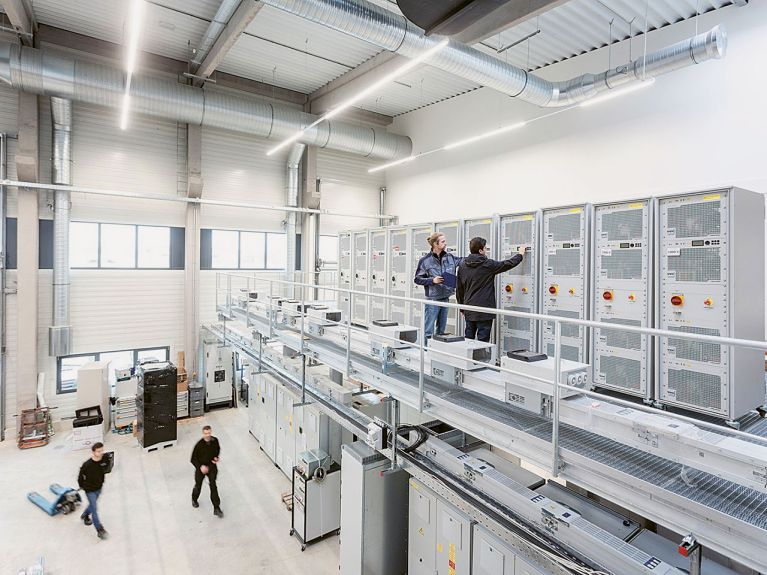
When was the Fraunhofer-Gesellschaft founded?
The Fraunhofer-Gesellschaft was founded on 26 March 1949, when it had only 103 members. How large it would eventually become would probably have been inconceivable then. The organisation long ago ceased working only in Germany and is now active worldwide – especially through its eight subsidiaries abroad, which are located, among other places, in the USA, Chile and Singapore. To that extent international projects are part of its day-to-day business. The FhG is also involved in numerous European Union ventures – such as the GreenCarbon project, which is engaged in research with partners from other countries into how to extract carbon fibres from biological waste.
What does Fraunhofer have to do with quantum technology?
Another example of this international cooperation is the QuTech project, which focuses on the development of quantum technology. Here Fraunhofer is cooperating with the TNO research organisation, the counterpart of the FhG in the Netherlands, and Delft University of Technology. Quantum technology is currently one of the most important research areas at Fraunhofer. Scientists worldwide are working on the development of the quantum computer, which can complete certain tasks much faster than conventional computers. This new kind of computer will be able to solve complex mathematical problems. For example, chemical and pharmaceutical companies could use quantum computers to develop and research complex new molecular structures. Quantum communication, on the other hand, would be especially suitable for securing data transmissions in banks and insurance companies because it automatically detects whether information has been accessed by hackers.
30,000 people work for Fraunhofer worldwide on the key technologies of the future.
Fraunhofer works with supercomputers
Many of the foundations for these applications are currently being laid at Fraunhofer. This work also includes a collaboration with IBM. In 2019 the company presented the IBM Q System One, one of the first quantum computers that could be used outside a laboratory environment. A consortium of seven Fraunhofer institutes has now been using it in Germany for several months. “We want to find out which applications it’s suitable for,” says Professor Manfred Hauswirth, Executive Director at Fraunhofer FOKUS in Berlin. “That’s because it definitely won’t completely replace the conventional computer – it will be used to solve specific complex problems.” First of all, appropriate algorithms had to be developed in order to be able to program and use the quantum computer at all in everyday situations. Making the quantum computer usable is a huge task in which many partners will have to collaborate.
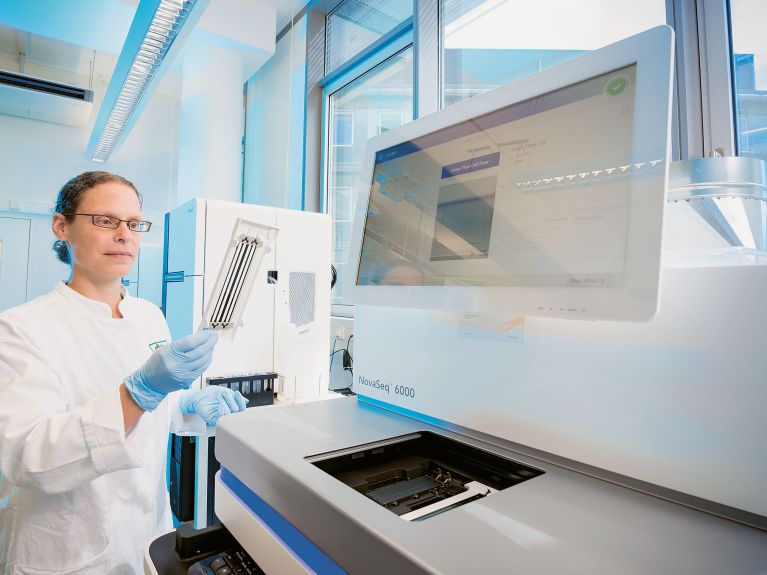
How does Fraunhofer's collaborative research help smaller companies?
“In Germany we’re in a very good position in that respect,” emphasises Professor Andreas Tünnermann, Director of the Fraunhofer Institute for Applied Optics and Precision Engineering IOF in Jena. “One special feature of research in our country is the system of collaborative research that funds the development of new technologies over many years” – especially technologies whose success is not yet foreseeable. Small and medium-sized enterprises could not take investment risks of this kind alone – thanks to government support, however, they are able to work with research institutions. The FhG has participated in many of these collaborative projects. “And it has done so over long periods,” says Tünnermann. “Collaborative projects of this kind can last more than ten years – and then deliver amazing results.”
Thanks to this staying power many Fraunhofer ideas have become success stories in the 75 years since the organisation’s foundation in 1949 – for example, the MP3 format, which took many years of development and was eventually able to assert its position as the global standard.
You would like to receive regular information about Germany? Subscribe here:
